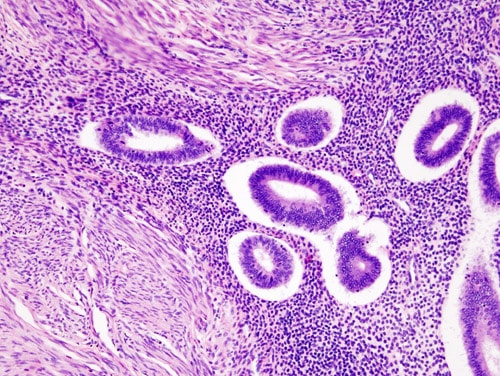If you are diagnosed with cysts, fibroids, polyps, are you aware of what could become uterine, cervical, or ovarian cancer?
The world of women’s health includes certain tests and screenings designed to help identify growths, like fibroids, polyps, and cysts, in order to protect you from the threat of cancer. How do you know what each of these growths mean, and which ones are something that you need to worry about? To understand the world of masses within the female reproductive system, you need to learn the difference between a polyp and a cyst, and how these growths differ from a fibroid. This is because not all of these growths can be cancerous, and some can become cancerous if they go undetected or untreated.
Are Fibroids Cancerous?
Within the tissues of the uterus, you can commonly develop fibroids, which are also known as leiomyomas or myomas for short. These growths can vary in shape, size, and location, as they can be found on the outside or deep within the uterine tissue. Women between the ages of 30 and 40 are the most likely to have a fibroid diagnosis, but younger and older women can develop fibroids as well. If you experience severe menstruation changes, abdominal pain, cramps, infertility, or bowel or urination problems, tell your doctor. They can check for fibroids during a routine pelvic exam, ultrasound, or laparoscopy, which involves a probe-like tube that allows a surgeon to view and treat accessible growths.
Fibroids are benign growths, which means they are not cancerous, and rarely require medical treatment. However, a small portion of women may need to have their fibroids removed if they experience chronic symptoms. Medical professionals use hormone therapy to treat severe symptoms, and in extreme cases, surgery may be an option. It’s important to note that not all surgical options leave a woman unable to carry a child because a full removal of the uterus, or hysterectomy, is not always necessary.
Can Polyps Be Cancerous?
Polyps grow on the inner lining of the uterus, called the endometrium, and can push themselves out into the inner cavity of the uterus. Polyps can also be found growing in the lining of your cervix. These ball-like structures look like they are emerging from the end of a stalk jutting from the uterine lining of your uterus or cervix. Unlike fibroids, polyps can be malignant growths (meaning they can be cancerous), but this usually only happens rarely with older, postmenopausal women.
Unfortunately, polyps can be easily mistaken for fibroids because they look similar in imaging tests and they can both cause heavy menstrual bleeding, cramping, and abdominal pain. Therefore, in order to determine the malignant or benign nature of polyps, your doctor will need to remove them and send them to a pathologist for testing. If benign polyps cause you pain, or if your doctor discovers your polyps are malignant, surgery can be performed to remove these growths.
Are Cysts Signs of Cancer?
Cysts can become the most painful type of growth and can also be diagnosed as malignant, which is why you need to understand the difference between a polyp and a cyst. Generally, cysts develop on the ovaries as sac-like pouches that can either be solid or filled with fluid from the female reproductive system. Small cysts cause dull or slightly aching pain, but larger cysts can twist the tissues to result in severe shooting or stabbing pains. Unlike fibroids and polyps, cysts do not cause menstrual bleeding—the greatest danger with cysts, aside from cancer, comes when they burst and release their contents into other body cavities, which can cause blood-poisoning or other illnesses. Ovarian cysts can become malignant and result in cancer, but most cysts are benign.
Your doctor can diagnose cysts through blood tests, vaginal ultrasounds, or a laparoscopy. If the ovarian cysts are small, surgery can remove them; however, larger cysts threaten your health and require the removal of the entire ovary. If harmful cysts are left untreated, it is also possible that the cancerous cells will spread throughout your body.
Know the Difference between a Polyp and a Cyst: Call Today
Although fibroids, polyps, and cysts possess the potential to cause you severe pain, the majority of these growths can be easily treated before they develop into cancerous tumors. According to the National Cancer Institute, more than 50,000 women in the United States were diagnosed with uterine cancer in 2014, and nearly one-fifth of those women lost their lives. Knowing the difference between a polyp and a cyst symptoms can be vital. Keeping routine visits to your women’s health provider remains your strongest chance of not becoming a statistic. Please contact The Woman’s Clinic today to schedule an appointment and take control of your reproductive health.

